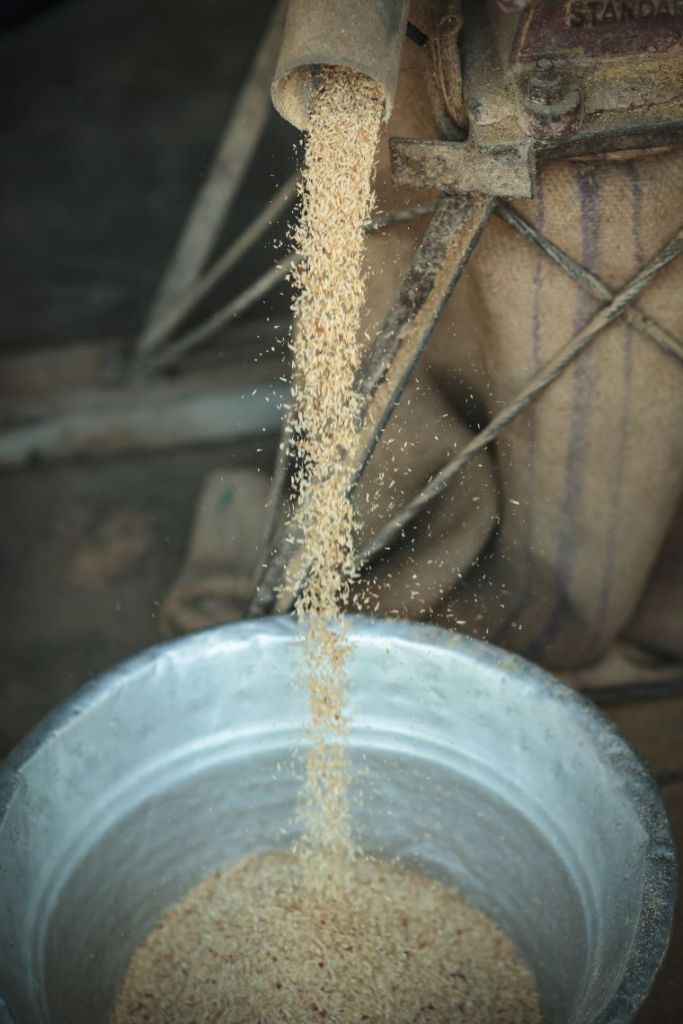Grain processing in Annapurna
Tomas is answering some questions


We find in the Auroville shop shelves raw, boiled, red and complete rice. Is it the same grain?
“It’s all rice, but they are different varieties and differently processed; the complete is a rice we baptized “Annapurna” since we picked it out in the middle of another variety; it’s a kind of farmers selection. The red rice is Poovan samba, the parboiled and raw rice are pooni rices.”
Are you doing the processing at the farm? If so, why?
“Yes, we process all grains on the farm to make sure no adulteration takes place (food gets mostly polluted/adulterated during processing). We are handling a very diverse grain need in Auroville and work with small amounts. All this is impossible to get done anywhere else. Local organic farmers often come with a request to process their millet and indigenous paddy at Annapurna since they have nowhere else to go.”
How long can you stock rice and millet? What is the best way to stock without having a loss?
“Stocking millets in raw form (in the husk) is no problem. All millets can be stored for a year, and some like varagu (kodo millet) for many years. Paddy (is rice in husk) loss starts to increase substantially when it becomes older than one year. Sun-drying it regularly will help but this is not easy with large quantities of stock. Processed grain we store in plastic cans and is flushed with CO2, after which it has a good shelf life (one year plus), but this is costly to do for larger amounts.”
Photo credit Edo Ardo @EG fotografy
Some Definitions:
Paddy and rice: Paddy becomes rice after the removal of husk by de-husking. Therefore, rice is a part of paddy. Paddy is the rice grain with husk. The term paddy was derived from a Malay word with the meaning “rice in the straw or husk”. Generally, rice plant also is called paddy. This is a crop which belongs to the family Graminae. Botanical name of the paddy is Oryza sativa. It is a wetland crop, which extensively grows all over the world.
White rice or brown (complete) rice: Rice is available as white rice and also brown rice. There has long been a debate about which is healthier among the two. Though people prefer to consume white rice, health experts say that brown rice has more nutrients than white rice. Brown rice is not polished like white rice which helps it to retain its bran and germ. Brown rice is fibre-rich, nutritious and chewy. However, brown rice does not fare as well as white rice in many dishes. As compared to white rice, brown rice takes longer to cook than parboiled white rice and also has a shorter shelf life.
Parboiled rice: The parboiled rice is produced by soaking paddy for some time in hot water after which it is shortly steamed and shade-dried. Once dry the paddy is de-husked and polished into white rice. In the process of steaming, most nutrients in the rice bran migrate into the kernel, and so those minerals and vitamins are not affected by polishing.
Some theories claim that parboiled rice is more nutritious than complete rice, since humans cannot digest the bran in which the nutrients reside in complete (brown) rice.



